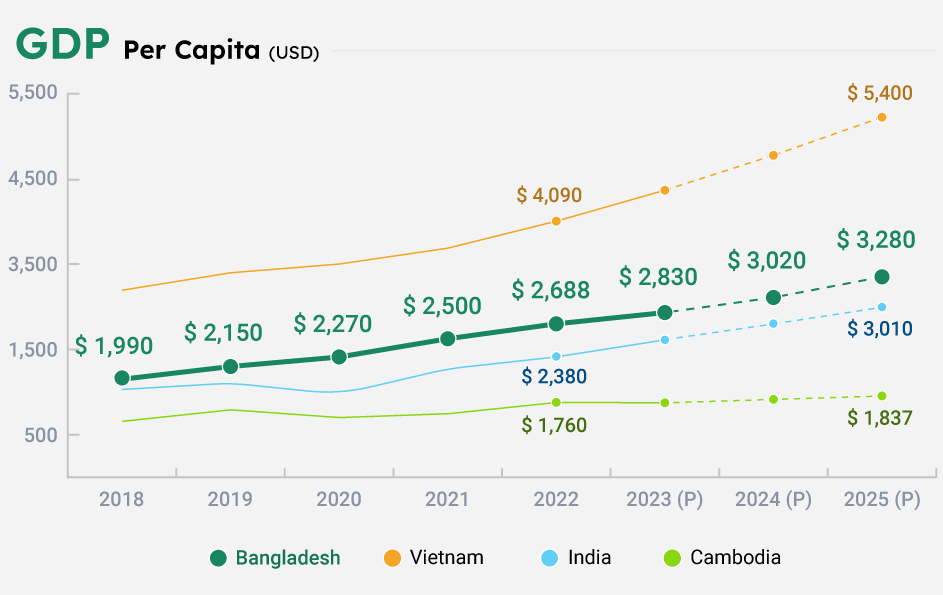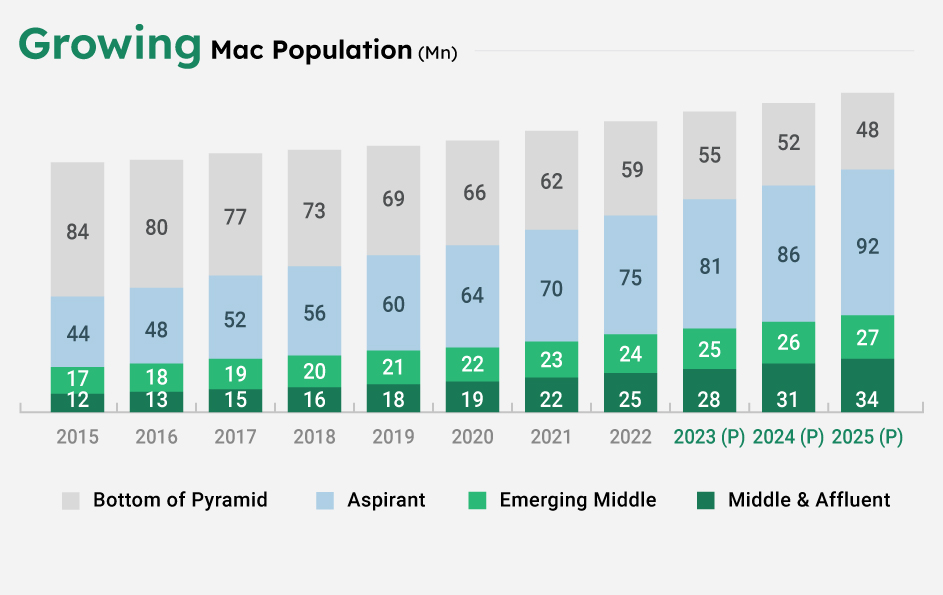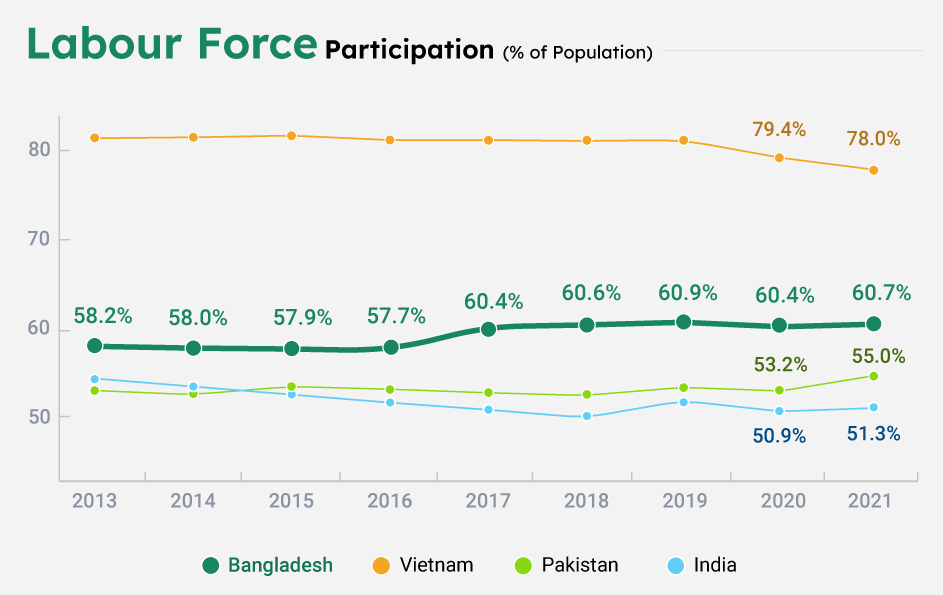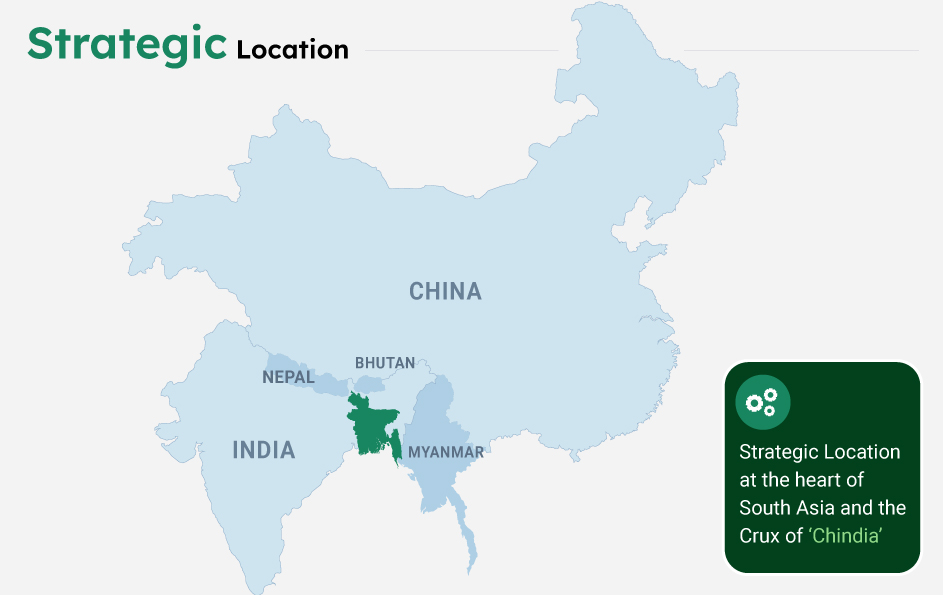As an emerging economic force
Boasting a decade-long average GDP growth rate of 6.5%, Bangladesh achieved a commendable 7% growth in 2021, despite the challenges of COVID-19. With a robust economy set to reach half a trillion USD, it holds the second-highest GDP in South Asia. Notably, its GDP per capita of USD 2150 exceeded India’s in 2019. According to BCG, on its path to graduating from LDC status by 2026, Bangladesh is on its way to becoming a trillion-dollar economy by 2040.
Sources: World Bank Data, UN LDC, Boston Consulting Group

As Bangladesh undergoes a transformative shift from a rural to an urban economy, accompanied by a decline in poverty rates, a thriving and ambitious middle and affluent class (MAC) is on the rise. Projected to grow at 10.5% annually, this dynamic middle-class population is set to reach 34 million by 2025. Fueled by youth, tech-savviness, and optimism, they are actively investing in goods and services that elevate their living standards. With a population of 171 million and a growing MAC population, Bangladesh is projected to become the 9th largest consumer market by 2030.
Sources: World Bank Data, Boston Consulting Group

At the heart of Bangladesh’s economic surge is its vibrant youth force. 62% of the population is below the age of 35 with the median age being only 28. Currently supported by a workforce of 74.4 million, the economy thrives on the potential of this demographic bulge. With rising labor force participation, the economy is also evolving into an increasingly inclusive one as female workforce participation has increased from 36% to 42% in the past 12 years.
Sources: World Bank Data, UNESCAP, Census 2022

Nestled between economic powerhouses China and India, along with being a part of the Belt Road Initiative (BRI), Bangladesh provides access to the 2.2 billion Asian consumer market. As an LDC, Bangladesh secures preferential trade agreements with both China and India, enjoying duty-free access to the majority of exports. In tandem, Bangladesh is actively progressing towards a Comprehensive Economic Partnership Agreement (CEPA) with India, aiming to streamline product standards, improve the supply chain, and boost connectivity between the two countries.
Sources: Boston Consulting Group, Brookings, McKinsey & Company

The surge in mobile internet penetration (65%) and overall internet penetration (75%) shows a remarkable growth from the modest 4.5% internet usage back in 2011. Bangladesh also has the 12th lowest data cost making it more accessible than other countries like Vietnam and Sri Lanka. Among other successes, positive trends in digitization are spearheading financial inclusion in Bangladesh. Marked by 25% growth in digital payments and 205 million registered Mobile Financial Services (MFS) accounts, rapid digitalization in Bangladesh is empowering financial access, fostering connections, and unlocking new markets.
Sources: GSMA, BTRC, Bangladesh Bank
